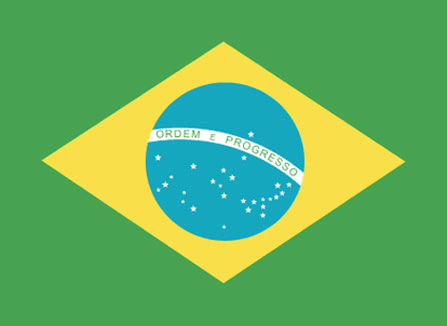To help inspire or plan your trip to Brazil, some of its major attractions
for travellers are shown below, including some of the best natural, historical, cultural and adventure sites in the country.
These include all of UNESCO World Heritage Sites for Brazil which represent the best
of the world's cultural and natural heritage.
Click on the icons below to focus on specific types of features
(click again to return to all).
|
|
|
|
|
|
|
|
|
|
|
|
 |
|---|---|---|---|---|---|---|---|---|---|---|---|
| Natural | History | Wildlife | Trekking | Cities | Religious Monument | Boat Journey | Rail Journey | Diving | Cultural | Adrenaline | UNESCO WHS |
Southeast Brazil - Wildlife attractions
| Ihla Grande | |
|---|---|
Ihla Grande is an island off the coast of Rio de Janeiro renowned for its beautiful beaches, rich vegetation and rocky landscapes. With no cars on the island, it's the perfect spot for relaxation and exploration on foot or by boat. The entire island is a protected area with an abundance of endangered wildlife that can be viewed on the 150km of trails through the pristine rainforest. The animal species here include red-browed Amazon parrot, broad-snouted caiman, maned sloth and brown howler monkey. Elsewhere the 6-7 hour hike to the Pico do Papagaio at 982 metres offers superb views of the island and surrounding waters while Antigo Presídio has the ruins of a once infamous prison for political prisoners. | |
| Atlantic Forest South-East Reserves | |
|---|---|
There are 25 reserved in the south-east of Brazil that contain extensive examples of the remaining Atlantic forests of Brazil, one of the world's richest and most endangered habitats. These complex ecosystems range from forested mountains to wetlands and islands and have high levels of endemism, including 70% of tree species and 40% of mammals. Animals of note found in these reserves include jaguar, bush dog, black-faced lion tamarin, muriqui and brown howler monkey. UNESCO World Heritage Site: Atlantic Forest South-East Reserves | |
| Pantanal | |
|---|---|
The Pantanal is a vast area of wetlands in central Brazil that is one of the best areas in South America for wildlife viewing. Covering some 230,000 km², it is one of the world's largest freshwater wetland ecosystems. The diversity of animal species in the Pantanal is staggering - over 650 bird species, 400 fish, 50 reptile and 80 mammalian, with the landscape ensuring they are much easier to see than in other parts of the continent. Animals include jacare, giant anteater, ocelot, jaguar, cougar, giant river otter, capybara and pamba and march deer while some of the bird species of note are the hyacinth macaw (the world's largest parrot), jabiru storks and roseate spoonbill. The wetlands can be explored on foot, horseback, boat rides or on vehicles depending on the terrain and time of year. UNESCO World Heritage Site: Pantanal Conservation Area | |
| Cerrado Protected Areas: Chapada dos Veadeiros and Emas National Parks | |
|---|---|
The Cerrado is one of the world’s oldest and most diverse tropical ecosystems which has served as refuge for several species during periods of climate change for millennia. Its two protected areas, the Chapada dos Veadeiros and Emas National Parks, are home to many threatened and endemic species including the Pantanal deer, jaguar, maned Wolf, rhea, giant armadillo, giant anteater, capybara and tapir. The natural features of Chapada Dos Veadeiros are spectacular - the Rio Preto Falls are 120 metres high and the canyons in the park have depths up to 40 metres. Chapada dos Veadeiros is also the most luminous place on earth according to NASA due to the high levels of quartz crystal in its soil. UNESCO World Heritage Site: Cerrado Protected Areas: Chapada dos Veadeiros and Emas National Parks | |

